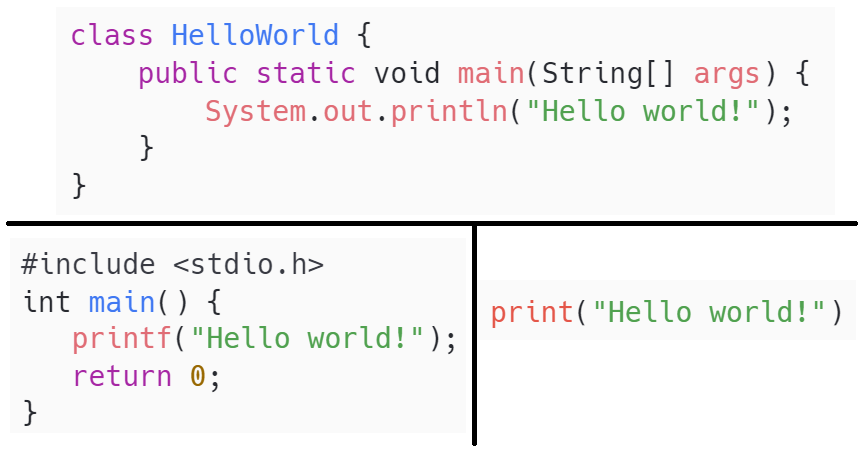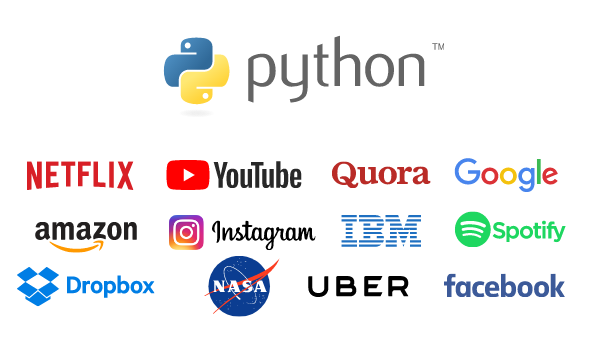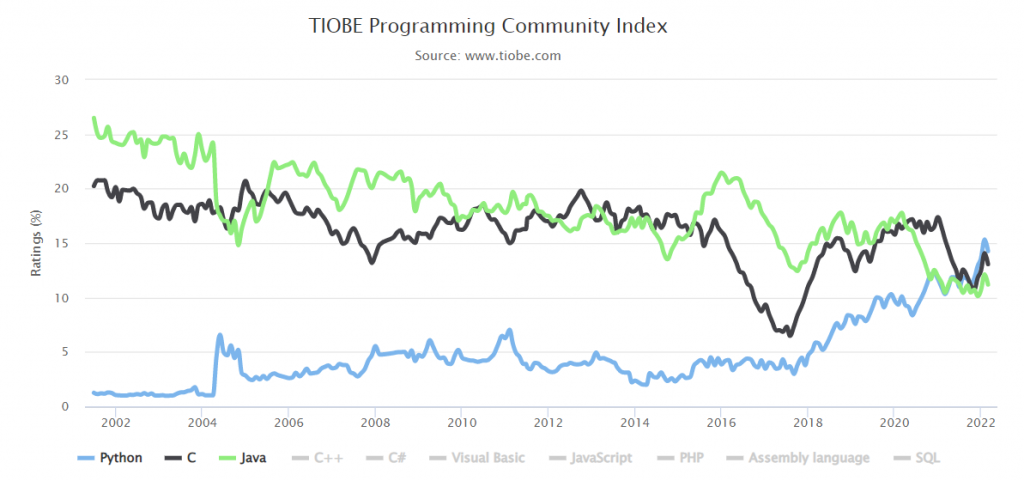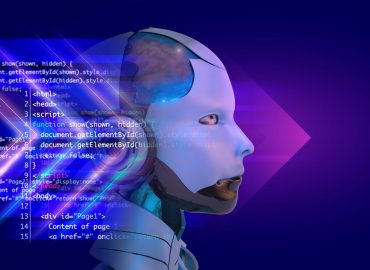Blog ENG
The rise of the Python programming language
Python is a programming language which over the last decade had a continuously secured place among the most popular programming languages in the world, and this year, too, it seems that there is no end to its rise in popularity.
Today it can be found everywhere, whether in the industry or in the academic domain. The simplicity of its syntax and speed of writing the source code make it very convenient both in development and in research.

Python was conceived in the late 1980s, and the implementation was started in 1989 by Guido van Rossum. The idea was to make a successor to the ABC programming language with an additional exception handling mechanism and the ability to interact with the Amoeba operating system. To date, Python has evolved into a Swiss Army knife among programming languages, despite a rocky history of development (transition from version 2.x to version 3.x).
What is Python used for?
The Python programming language is often described as a general purpose programming language, which is why it is a very suitable basis for learning programming, whether it is the first programming language or one dealing with a specific subfield of IT.
Python can be found everywhere, and its strength lies in the large selection of high-quality modules specific to the field of application:
- data analytics and manipulation (Numpy, Pandas…)
- data science, machine learning, deep learning, NLP, CV (Scikit-Learn, TensorFlow, Keras, NLTK, PyTorch…)
- web scraping and web crawling – automated browsing and data extraction on the web (Requests, BeautifulSoup, Scrapy, lxml, Selenium…)
- data vizualization (Matplotlib, Seaborn, Bokeh…)
- web application development (Django, Flask…)
- robotics (Pyro, DART, PyBullet…)
- game development (PyGame, PyGlet…)
- digital image processing (Pillow, OpenCV, Scikit-Image…)
- automation of various business processes

TIOBE index
The TIOBE index is an index that has been monitoring the popularity of programming languages for over 20 years. It is calculated through the number of search results on various web search engines (a total of 25 different search engines) and is updated once a month.
For many years, C and Java were the programming languages that graced the top of the rankings, which changed in October 2021, when Python jumped to first place in the rankings (Pythons fight against Java began late 2020).

An indicator of Python’s incredible growth is the fact that in 2021, Python won the title of programming language of the year for the fifth time (the programming language with the highest growth), three times in the last four years.
Of course, the TIOBE index is not a measure of the quality of programming languages, so we are not saying that Python is the best programming language, but it is a great measure of the influx of new people into the Python community and the evolution of the language.
Why is Python popular?
There are many reasons for Pythons popularity:
- simple syntax, fast development
- excellent for solving tasks where the speed of development is of a higher priority than the speed of execution
- free and open-source
- everyone can try it out and use it at no cost
- application variety
- various specific fields of application mentioned earlier
- easy learning curve
- “easy to learn, hard to master”
- compatibility, interoperability
- the possibility to combine technologies within Python (between different modules) and with other programming languages and technologies
- supports multiple programming paradigms
- functional programming, object oriented programming, procedural programming…
- the standard library of modules
- about everything most developers need to get started comes out-of-the-box in a collection of modules built into the standard Python distribution
- a big community
- huge amount of developers who are actively working with Python, and improving it, making it evolve very quickly
- there is always someone who is willing to help, almost no problem is unseen before
- PyPI
- a large community implies that Python has a large collection of third-party modules, which according to many are its greatest value
- popularity due to popularity
- because of the popularity of the language, Python is constantly growing, as most of those entering the field of programming explore various programming languages and often end up in Python, which is the most attractive because of the features mentioned above
Conclusion
Considering all of the above, if you plan on entering the field of programming this year, Python will surely cover everything you need, whether you want to automate a process, make a website, your own video game or enter the field of data science.
If you have any questions or need advice on programming in Python, feel free to contact the author of this post at domagoj.maric@megatrend.com.
References
- Python (programming language), Wikipedia, available at: https://en.wikipedia.org/wiki/Python_(programming_language)
- TIOBE Index for March 2022, available at: https://www.tiobe.com/tiobe-index/
- Megatrend poslovna rješenja orgraniziraju Python edukaciju, BUG, available at: https://www.bug.hr/promo/megatrend-poslovna-rjesenja-organiziraju-python-edukaciju-19234

